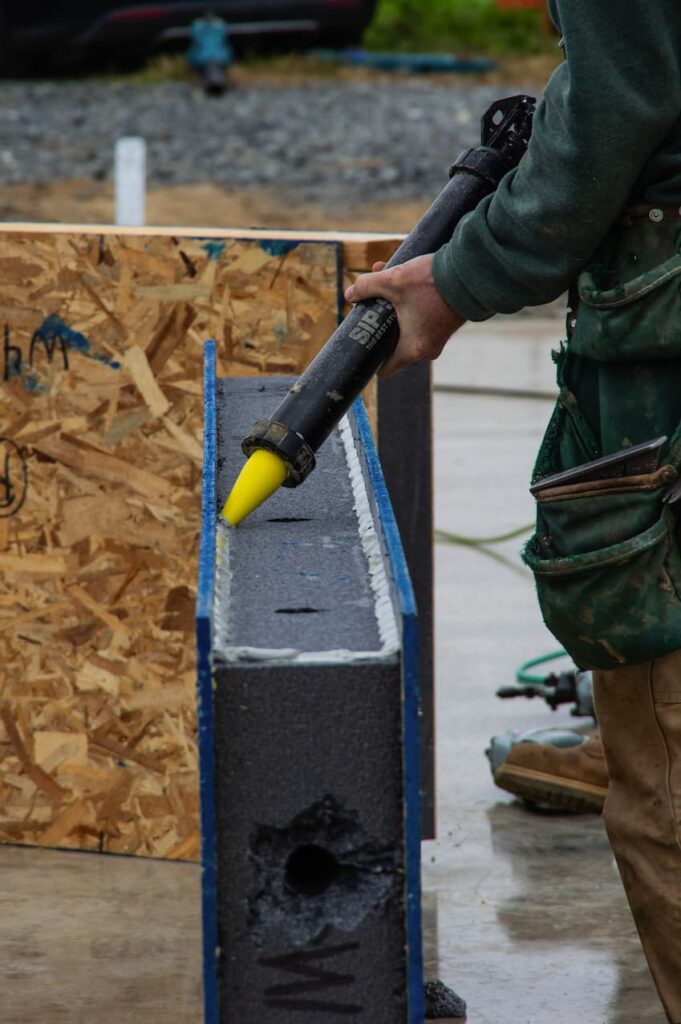by Nicole Miller | Mar 1, 2024

There seems to be a lot of confusion around Structural Insulated Panels (SIPs) in home building. In this article, we will run through the most common questions we’ve seen!
Are SIPs panels non-combustible? / Are SIPs panels fire resistant?
While SIPs can still catch fire, they are less combustible than traditional stick-framed homes. That’s, in part, due to less wood being used and because of the flame retardants used on the foam. In combination with the gypsum drywall, the whole assembly has a 1-hour fire rating. SIPs construction also does not require an attic space, which can be a fire hazard, thereby eliminating a major threat.
How are SIPs panels made?
SIPs are manufactured off-site to the exact specs of the house. Each panel is made up of two OSB panels sandwiching an EPS or GPS foam core. During the manufacturing process, workers cut out each window and door opening and cut all of the pieces perfectly to size, so that when they are installed on site, they will fit together perfectly like Legos. This also means that the panel off-cuts can be recycled and reused at the manufacturing plant, reducing the overall waste!
Are SIPs panels load bearing? / Are SIPs panels structural?
Yes! SIPs can be used for the entire exterior shell of a house. According to Insulspan, “SIPs have structural properties similar to that of a steel I-beam.” In fact, SIPs are actually considered more structurally sound than traditional stick-framed homes.
Are SIPs panels environmentally friendly?
Yes! SIPs are generally considered to be more environmentally friendly than traditional stick-framed homes. That being said, SIPs can use either EPS or GPS foam cores and EPS is not a very eco-friendly option. So, it’s best to use GPS SIPs in order to lessen the home’s overall carbon footprint. Also, since SIPs are manufactured off-site, they are made to the specific dimensions of a home which reduces the waste. Any scraps produced during manufacturing are also reused. Furthermore, when shipped, the panels are tightly flat-packed together reducing fuel needed for transportation.
Can SIPs panels get wet?
Yes! SIPs are built to dry out and can withstand exposure to the elements for many months. The foam core doesn’t absorb water unless it’s physically submerged or constantly wet for a long time. In all the years we’ve built using SIPs in the rainy Pacific Northwest, we have never had an issue with the SIPs compromising due to moisture.
How long will a SIPs house last?
SIPs are a super sturdy and hardy building material. Assuming you are properly maintaining your house (i.e. replacing your roof every 30-50 years, fixing any broken siding or trim, fixing leaks as soon as they happen, etc.), then a SIPs house will last 100+ years.
Still have questions? Shoot us an email! We’d be more than happy to answer any questions you have!
If you’re interested in learning more about our net zero energy homes or want to get started designing your very own net zero energy home, contact us today! We also offer pre-made net zero energy home plans!


